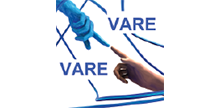Virtual aquarium: tool for science motivation using augmented realty
- abcdSchool of Informatics, Walailak University, Nakhon Si Tammarat, Thailand
Cite as
P. Boonbrahm, C. Kaewrat, P. Pengkaew, S. Boonbrahm (2018). Virtual aquarium: tool for science motivation using augmented realty. Proceedings of the 4th International Conference of The Virtual And Augmented Reality In Education (VARE 2018), pp. 97-102. DOI: https://doi.org/10.46354/i3m.2018.vare.016
Abstract
During the past decade, there has been some significant drop in the number of Thai students taking sciences class, even though the country is struggling to transform the economy into an innovation-driven one which needed lots of scientists. These may relate to many sources, but the most important one is the lack of inspiration and motivation in science. To fix these problems, we have to get them inspiration for sciences and augmented reality (AR) is the suitable technology to answer this question. In this experiment, children will be guided to learn about fish and build the virtual aquarium using AR. The children can create their 3D virtual fish from the 2D picture and let them swim in the aquarium. Testing this concept, we have found that lots of children start with curiosity about how it has been done and then went to try and finally enjoy the output.
References
- Rohaya D., Rambli A., Matcha W., Sulaiman S., Nayan, M.Y., 2012. Design and Development of an Interactive Augmented Reality Edutainment Storybook for Preschool. IERI Procedia, 2, 802- 807.
- Gopalan V., Zulkifli A.N., Bakar J.A.A., 2016. A study of students’ motivation using the augmented reality science textbook. AIP Conference Proceedings, 1761(1).
- Clark A., Dünser A., Grasset, R., 2011. An Interactive Augmented Reality Coloring Book. Proceeding SA '11 SIGGRAPH Asia 2011 Emerging Technologies, Hong Kong, China.
- Gopalan V., Aida J., Bakar A., and Zulkifli A., 2017. A brief review of augmented reality science learning. AIP Conference Proceedings 1891, 020044.
- Nielsen B., Brandt H., Swenson H., 2016. Augmented Reality in science education– affordances for student learning. NoDiNa. 12(2), 157-174.
- Jackson A. S., Bulat A., Argyriou V., and Tzimiropoulos G., 2017. Large pose 3D face reconstruction from a single image via direct volumetric cnn regression. arXiv preprint arXiv:1703.07834, 2017.
- Magnenat S., Ngo D.T. , Zund F., Ryffel M., Noris G., Rothlin G., Marra A., Nitti M., Fua P., Gross M., Sumner R.W., 2012. Live Texturing of Augmented Reality Characters from Colored Drawings, IEEE Transactions on Visualization and Computer Graphics, 21(11), 1201-1210, November 2015.
- Kwangmoon C., Hadong K. and Youngho L., 2016. Augmented Reality Coloring Book with Transitional User Interface. Indian Journal of Science and Technology, Vol 9(20), May 2016.
